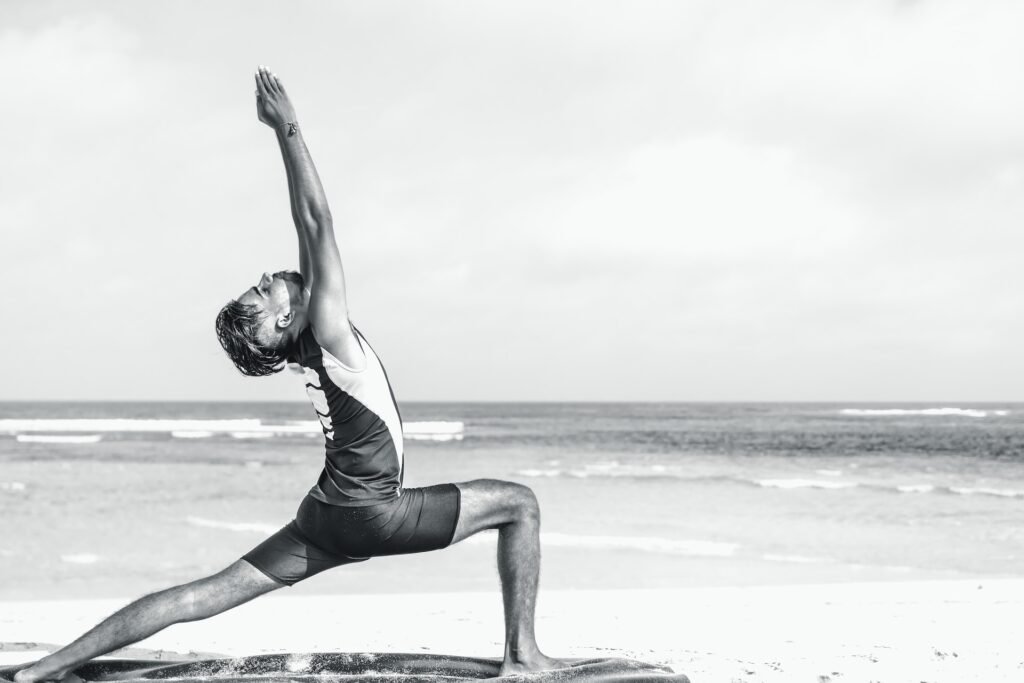In a world where the pursuit of physical well-being intertwines with our daily lives, understanding the importance of flexibility emerges as a cornerstone for overall health and injury prevention. Welcome to a comprehensive exploration of “Why Flexibility Matters: The Role of Stretching in Injury Prevention.” From unraveling the science behind stretching to advanced techniques, this journey delves into the intricacies of flexibility. We navigate through common misconceptions, adapt flexibility training to age, and explore its vital role in various sports. Discover the art of measuring progress, the impact of lifestyle choices, and expert tips that guide you through a holistic approach, ensuring flexibility becomes not just a physical attribute but a mindful practice embedded in your wellness journey. Join us in embracing the significance of flexibility for a resilient and agile life.
| Description | Tip |
|---|---|
| Flexibility Basics | Start with simple static stretches, holding each for at least 15 seconds. Gradually increase the duration as your flexibility improves. |
| Dynamic Stretching | Incorporate dynamic stretches in your warm-up routine to prepare your muscles and joints for more intense physical activity. |
| Active Isolated Stretching (AIS) | Try AIS by holding each stretch for only two seconds and repeating it several times. This method can enhance both flexibility and muscular strength. |
| Myofascial Release | Use tools like foam rollers or massage balls for myofascial release to eliminate pain and enhance motion in connective tissues. |
| Assessing Flexibility | Regularly perform flexibility tests, such as the sit-and-reach or shoulder flexibility test, to track progress and adjust your routine accordingly. |
| Flexibility in Sports | Tailor your flexibility routine to the specific requirements of your sport, focusing on areas crucial for optimal performance and injury prevention. |
| Adapting Flexibility with Age | Modify your stretching routine as you age, emphasizing gentle, static stretches and incorporating activities that improve balance and coordination. |
| Debunking Stretching Myths | Challenge common misconceptions, such as the idea that everyone can achieve the same level of flexibility, to approach stretching with realistic expectations. |
| Incorporating Flexibility into Workouts | Integrate dynamic stretches into warm-ups and static stretches into cooldowns, ensuring flexibility training is a consistent part of your overall fitness routine. |
| Measuring Flexibility Progress | Keep a journal, use regular flexibility tests, or take photographs to track improvements and celebrate your flexibility milestones. |
| Lifestyle Impact on Flexibility | Be mindful of sedentary habits and prioritize an active lifestyle. Hydrate well, consume a balanced diet, and manage stress for optimal muscle and joint health. |
| Expert Tips for Effective Stretching | Warm up before stretching, breathe deeply during stretches, and maintain consistency in your routine to maximize the benefits of stretching. |
| Avoiding Overstretching | Understand your body’s limits, stretch within a comfortable range, and seek guidance from professionals to prevent overstretching-related injuries. |
| Incorporating Mindfulness and Relaxation | Integrate mindfulness techniques, such as deep breathing and meditation, into your stretching routine for enhanced relaxation and improved flexibility. |
- Importance of Flexibility: An Introduction to Stretching and Injury Prevention
- Understanding the Basics: What is Flexibility and Why Does It Matter?
- The Science Behind Stretching: How It Helps Prevent Injuries
- Types of Stretching: Static, Dynamic, and More
- Assessing Your Flexibility: Simple Tests and Measures
- Advanced Stretching Techniques for Improved Flexibility
- The Role of Flexibility in Different Sports and Activities
- Age and Flexibility: Adapting Your Routine Over Time
- Common Misconceptions About Stretching and Flexibility
- Incorporating Flexibility Training into Your Workout Regimen
- Measuring Progress: How to Track Improvements in Flexibility
- The Impact of Lifestyle Choices on Flexibility
- Expert Tips: Maximizing the Benefits of Stretching
- Avoiding Overstretching: Understanding Your Body’s Limits
- Incorporating Mindfulness and Relaxation in Stretching Routines
- Final Thoughts:
- FAQs:
Importance of Flexibility: An Introduction to Stretching and Injury Prevention
Flexibility, the ability of our joints to move through a full range of motion, is a key component of physical fitness and overall health. It’s not just for athletes or yoga enthusiasts; everyone benefits from maintaining and improving their flexibility. This introductory section explores the foundational concept of flexibility and its critical role in preventing injuries. Stretching, the most common method to enhance flexibility, isn’t just about touching your toes or doing splits. It’s about maintaining a healthy, functional body that can adapt to the stresses of daily activities and sports with ease and less risk of injury.
Understanding the Basics: What is Flexibility and Why Does It Matter?
Flexibility varies greatly among individuals, influenced by factors like age, gender, body composition, activity level, and genetics. It refers to the capacity of your joints to move freely through a range of motion without pain or stiffness. This fundamental ability impacts how we perform everyday tasks – from bending to pick up something to reaching overhead. Good flexibility isn’t just about performing better physically; it’s also about reducing the risk of injuries. Tight muscles can lead to imbalances and improper body alignment, increasing the likelihood of strains, sprains, and joint pain. Hence, understanding and improving your flexibility is crucial for a healthy, active life.
The Science Behind Stretching: How It Helps Prevent Injuries
When we stretch, we’re actually working on the elasticity of our muscles and tendons. Stretching regularly helps maintain muscle length and flexibility, which in turn keeps the joints well-aligned and reduces the risk of musculoskeletal injuries. Scientific studies have shown that well-stretched muscles are less prone to tears and strains. Moreover, stretching increases blood flow and nutrient supply to the muscles, aiding in recovery and overall muscle health. By incorporating regular stretching into your routine, you can maintain a balanced musculoskeletal system, which is vital for injury prevention.
Types of Stretching: Static, Dynamic, and More
Stretching can be categorized into several types, each with specific benefits. Static stretching involves holding a stretch in a challenging but comfortable position for a period of time, usually between 15 to 60 seconds. This type of stretching is great for cooling down after exercise and improving overall flexibility. Dynamic stretching, on the other hand, involves moving parts of your body and gradually increasing reach, speed of movement, or both. This is ideal as a warm-up exercise to prepare your muscles for physical activity. Other forms include ballistic stretching, which uses momentum to force a limb beyond its usual range of motion, and PNF (Proprioceptive Neuromuscular Facilitation), which combines passive stretching and isometric contractions. Each type serves different purposes and can be used in various phases of physical activity.
Assessing Your Flexibility: Simple Tests and Measures
To understand your current level of flexibility and track improvements, there are several simple tests you can perform. One common method is the sit-and-reach test, which measures the flexibility of your lower back and hamstring muscles. Another is the shoulder flexibility test, where you try to touch your hands behind your back, one from above and one from below. These tests can be done regularly to monitor progress. It’s important to note that flexibility tests should be performed carefully to avoid injury. Also, remember that everyone’s range of motion is different, and improvements can be gradual. The goal is to improve over time, not to force your body into uncomfortable positions.
Advanced Stretching Techniques for Improved Flexibility
Building upon basic stretching routines, advanced techniques can further enhance your flexibility. One effective method is active isolated stretching (AIS), which involves holding a stretch for only two seconds at a time but repeating it multiple times. This method is excellent for increasing both flexibility and muscular strength. Another advanced technique is myofascial release, which involves applying gentle sustained pressure into the connective tissue to eliminate pain and restore motion. Tools like foam rollers or massage balls can be used for this purpose. Additionally, incorporating yoga or Pilates into your routine can provide a more holistic approach to improving flexibility.
The Role of Flexibility in Different Sports and Activities
Flexibility plays a crucial role in various sports and physical activities. In sports like gymnastics, dance, or martial arts, high levels of flexibility are essential for performance. However, it’s also important in more common sports like soccer, basketball, and running, as it helps improve efficiency and reduces the risk of injuries. Each sport has specific flexibility requirements, and athletes often tailor their stretching routines to cater to these needs. For instance, a runner might focus more on lower body flexibility, whereas a swimmer might prioritize shoulder and upper body flexibility.
Age and Flexibility: Adapting Your Routine Over Time
As we age, our muscles and joints naturally become less flexible. This decrease in flexibility is due to changes in the muscles and connective tissues, making them stiffer and less elastic. However, regular stretching can significantly mitigate these effects. It’s important to adapt your stretching routine as you age, focusing more on gentle, static stretches and avoiding aggressive stretching techniques that could lead to injuries. Older adults should also focus on stretches that improve balance and coordination, which are crucial for preventing falls.
Common Misconceptions About Stretching and Flexibility
There are several myths surrounding stretching and flexibility. One common misconception is that stretching before a workout can prevent all injuries. While stretching does help, it’s not a foolproof method against injuries. Another myth is that everyone can achieve the same level of flexibility. In reality, genetic factors play a significant role, and not everyone can achieve the same range of motion. It’s also a misconception that flexibility training isn’t as important as other forms of exercise. Flexibility is a critical component of overall fitness and should be integrated into regular exercise routines.
Incorporating Flexibility Training into Your Workout Regimen
Flexibility training should be a part of your regular workout regimen, not an afterthought. Ideally, a balanced workout routine includes cardiovascular exercise, strength training, and flexibility workouts. Incorporating dynamic stretches as part of the warm-up helps prepare the muscles for physical activity, reducing the risk of injuries. Post-workout, engage in static stretching to help muscles recover and improve flexibility over time. It’s also beneficial to dedicate separate sessions solely to flexibility training, such as yoga or Pilates classes, especially if you are looking to significantly improve your flexibility.
Measuring Progress: How to Track Improvements in Flexibility
Tracking your flexibility progress is key to understanding the effectiveness of your stretching routine. One way to measure progress is through regular re-assessment using the same tests you used initially, like the sit-and-reach test or the shoulder flexibility test. Another method is keeping a journal of your stretching routine, noting any increases in range of motion or decreases in discomfort or stiffness over time. Photographic records can also be a visual way to track progress, showing changes in posture and flexibility. It’s important to remember that improvements in flexibility can be gradual, so patience and consistency are crucial.
The Impact of Lifestyle Choices on Flexibility
Lifestyle choices significantly impact flexibility. Sedentary behavior, like sitting for extended periods, can lead to muscle tightness and reduced flexibility. On the other hand, an active lifestyle that includes regular stretching can enhance flexibility. Diet also plays a role; staying hydrated and eating foods rich in omega-3 fatty acids can help maintain muscle and joint health. Additionally, managing stress through relaxation and breathing exercises can prevent muscles from becoming tense and stiff, thereby aiding flexibility.
Expert Tips: Maximizing the Benefits of Stretching
Experts recommend various tips to maximize the benefits of stretching. First, it’s important to warm up with light activity before stretching to increase blood flow to the muscles. Stretching should be done to the point of mild discomfort, not pain. Breathing deeply and slowly during stretching can help deepen the stretch and relax the muscles. Consistency is key, so incorporating stretching into your daily routine is vital. Lastly, listening to your body and not overdoing it is crucial to prevent injury.
Avoiding Overstretching: Understanding Your Body’s Limits
While stretching is beneficial, it’s possible to overdo it. Overstretching can lead to muscle strains or even ligament damage. It’s important to understand your body’s limits and stretch within a comfortable range of motion. If you feel pain during a stretch, it’s a sign to ease up. Always approach stretching with a gradual increase in intensity and duration, especially if you are new to flexibility training. Consulting with a physical therapist or fitness professional can also provide guidance tailored to your body’s needs and limitations.
Incorporating Mindfulness and Relaxation in Stretching Routines
Mindfulness and relaxation techniques can significantly enhance the effectiveness of stretching. By focusing on your breath and being present during your stretching routine, you can increase body awareness and reduce the risk of injury. Mindful stretching allows you to tune into your body’s cues, ensuring that each stretch is performed safely and effectively. Relaxation techniques, such as deep breathing or meditation, can also help in releasing muscle tension, further improving flexibility. Incorporating these practices into your stretching routine can create a more holistic approach to flexibility and overall wellness.
Final Thoughts:
As we conclude our exploration into the realm of flexibility and the pivotal role of stretching in injury prevention, it becomes evident that this practice extends far beyond physical benefits. Embracing flexibility is not just about enhancing range of motion; it’s a journey toward holistic well-being. From measuring progress and understanding the impact of lifestyle choices to incorporating mindfulness into stretching routines, flexibility intertwines with our daily lives. The key takeaway is clear – flexibility is a dynamic and lifelong pursuit that transcends mere physicality, offering a path to resilience, mindfulness, and an agile, balanced life. So, let the journey towards flexibility be not just a routine but a mindful practice, fostering a healthier and more adaptable version of ourselves.
FAQs:
1. Why is flexibility important for overall health?
Flexibility is crucial for overall health as it enhances the range of motion in joints, reduces the risk of injuries, improves posture, and contributes to better muscle and joint health. It allows for smooth, pain-free movement in daily activities and various physical exercises.
2. How often should I stretch for optimal flexibility?
To optimize flexibility, it’s recommended to incorporate stretching into your routine at least 2-3 times per week. However, daily stretching, especially dynamic stretches before exercise and static stretches after, can provide additional benefits.
3. Can flexibility training prevent injuries in different sports?
Yes, flexibility training can significantly reduce the risk of injuries in various sports. It helps improve muscle and joint function, enhances coordination, and ensures the body can adapt to the specific demands of different physical activities.
4. Are there age-specific considerations for flexibility training?
Flexibility needs evolve with age, and adapting your routine is essential. Older adults should focus on gentle stretches, balance exercises, and activities that improve joint mobility. Consistency is key to maintaining flexibility as you age.
5. Is there such a thing as too much stretching?
Yes, overstretching can lead to injuries. It’s important to stretch within a comfortable range of motion and avoid pushing your body too far. Listen to your body, and if you experience pain during a stretch, ease up to prevent muscle strains or ligament damage.
6. Can stretching help with stress relief?
Yes, stretching can aid in stress relief. Mindful stretching, combined with deep breathing, can promote relaxation and reduce muscle tension. Incorporating stretching into your routine can contribute to overall mental well-being.
7. How long does it take to see improvements in flexibility?
The timeline for improvements in flexibility varies among individuals. Consistent stretching over weeks to months is generally required to see noticeable changes. Patience and regularity are key to achieving and maintaining flexibility gains.
8. Can I improve flexibility without doing traditional stretches?
While traditional stretches are effective, other activities like yoga, Pilates, and dynamic stretching can also improve flexibility. These exercises engage muscles in different ways, contributing to overall flexibility and joint mobility.
9. Is flexibility only about physical benefits?
No, flexibility extends beyond physical benefits. Mindful stretching practices can enhance body awareness, promote relaxation, and contribute to mental well-being. Flexibility becomes a holistic practice that intertwines with overall wellness.
10. Should I consult a professional before starting a flexibility routine?
It’s advisable, especially if you have pre-existing health conditions or injuries. A fitness professional or physical therapist can provide personalized guidance, ensuring your flexibility routine aligns with your individual needs and limitations.



